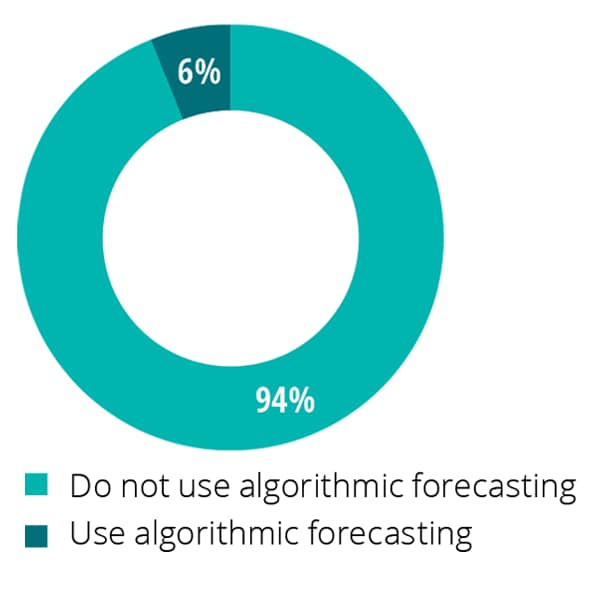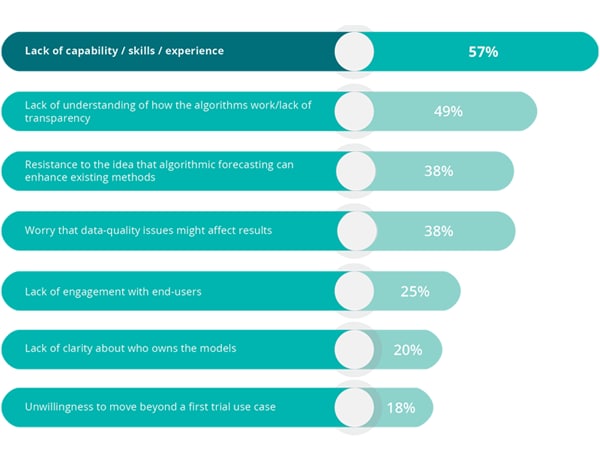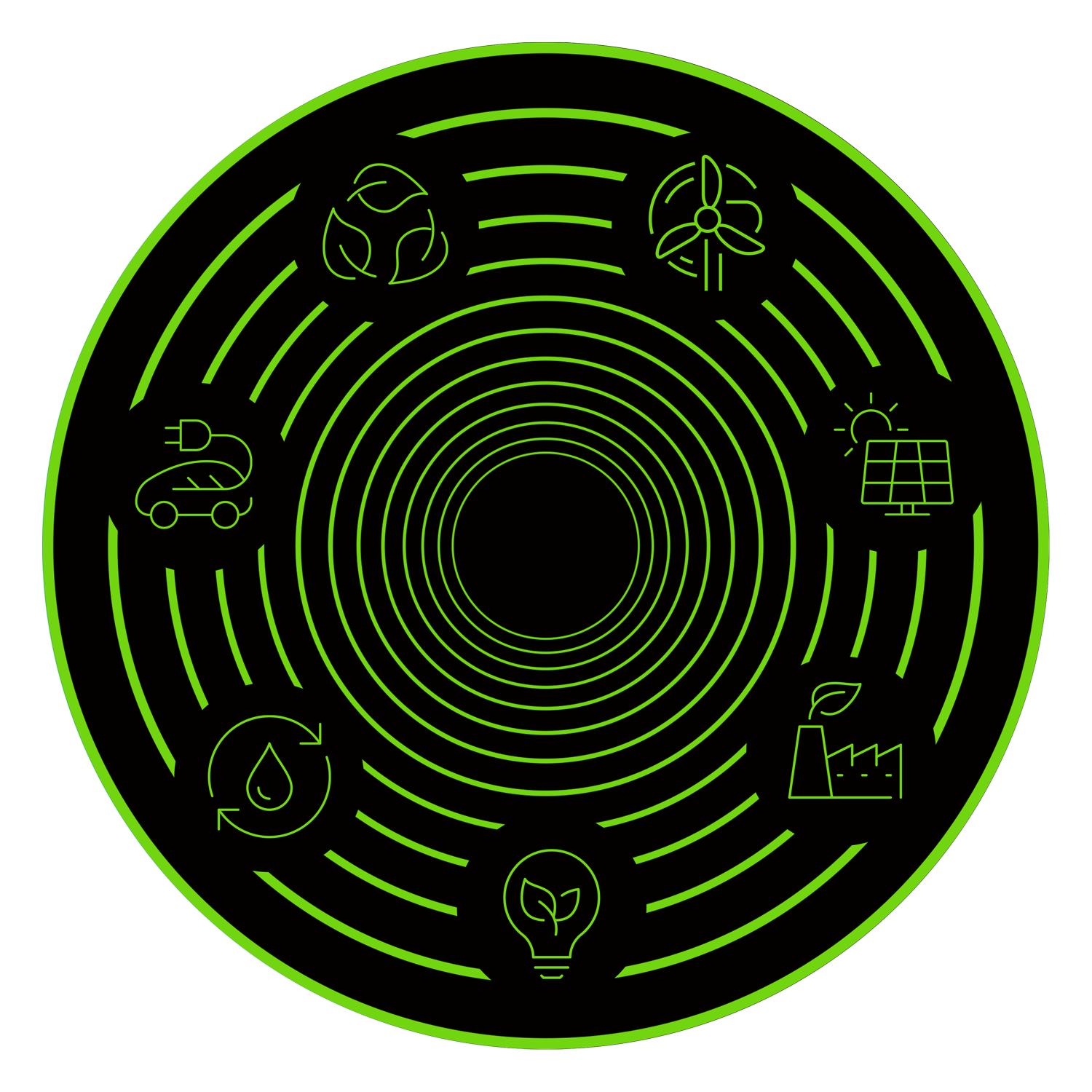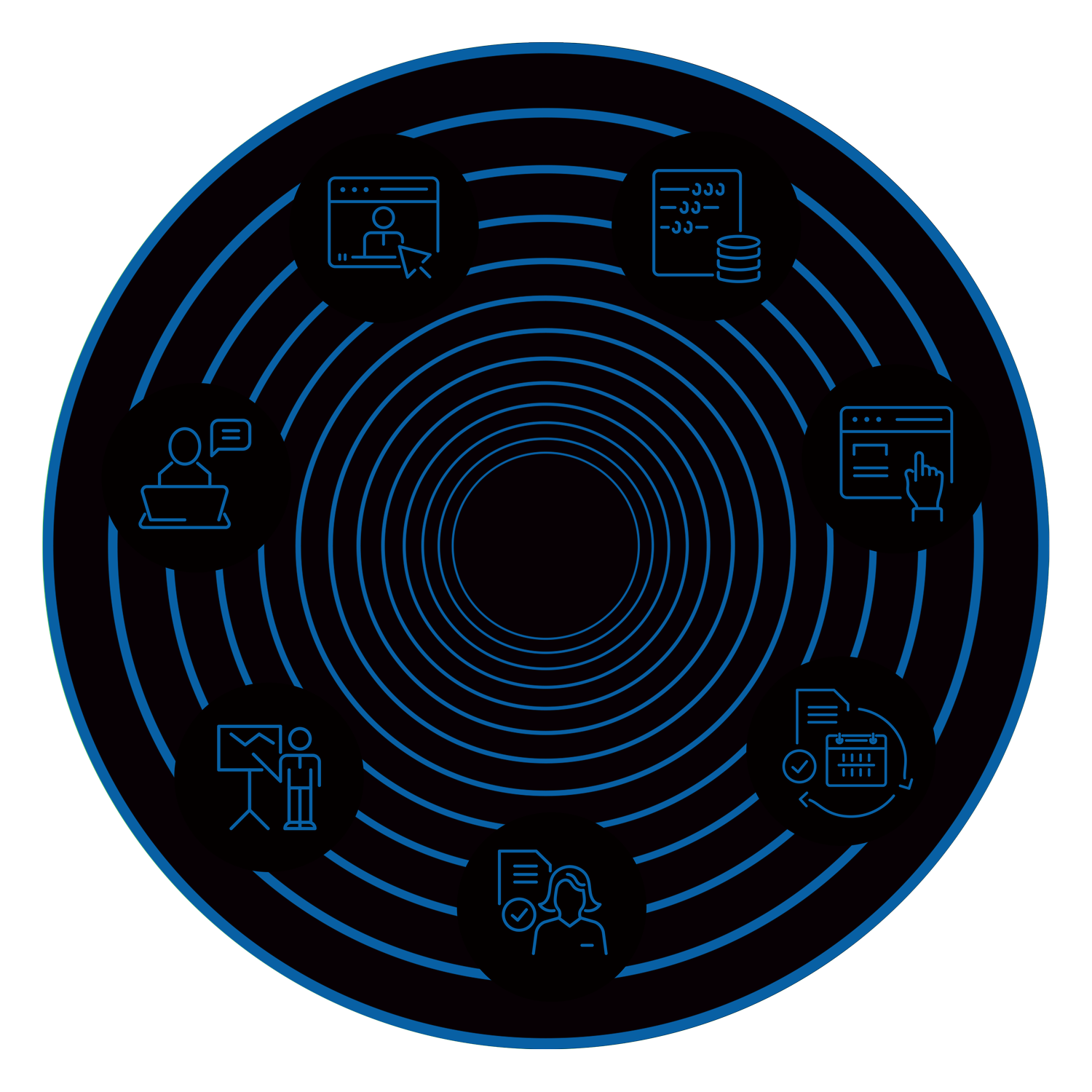Algorithmic forecasting
The advancement of science, a proliferation of data and the accelerated development of computing capabilities has led businesses to be more inquisitive in relation to tools and technologies.
One phenomenon that has emerged is algorithmic forecasting, which relies on historical data and statistical models to predict what is likely to happen in the future. Algorithms are chosen and modern computing capabilities make collecting, storing and analysing data fast and affordable.
Forecasting has traditionally been, and is still seen by many organisations today, a time-consuming process, based on spreadsheets and with limited use of external drivers. With three out of four organisations still using spreadsheets to prepare plans, budgets and forecasts, we are yet to see organisations scale and adopt algorithmic forecasting across the enterprise.
Indeed, 94% of respondents do not currently use algorithmic forecasting and 30% of respondents state that current planning processes focus more on what has happened rather than what will happen. Organisations have clearly been hesitant about adopting algorithmic forecasting to complement or part-replace traditional planning techniques, but do recognise that it can provide a useful reference point in the planning, budgeting and forecasting (PB&F) process.
Extent of use: All industries/by use
Several roadblocks have been highlighted as hindering the adoption of algorithmic forecasting by organisations. Respondents cite concerns over ownership and data quality, as well as resistance within the organisation to acknowledge the proven benefits of algorithmic forecasting.

Roadblocks to the adoption of algorithmic forecasting
Around one in five reported an unwillingness to move beyond a first trial use case; although companies are trialling algorithmic forecasting through proof of concepts, we are yet to see this being scaled across organisations.

Based on discussions with Chief Financial Officers and Financial Planning & Analysis leaders, we are seeing leading organisations:
• trial algorithmic forecasting in pockets of the organisation before deciding whether to scale across the enterprise;
• apply algorithmic forecasting to top-down planning and product-level forecasting use cases; and
• start with internal structured data before harnessing external and unstructured data in their algorithms
Read the latest trends on algorithmic forecasting
Download the latest reportCFO as the driver of sustainability
CFOs find benefits from ESG investing
Sustainability Reporting – Seek and you may find
Key Contact

Martin Jermyn
Global Planning, Budgeting & Forecasting Survey Sponsor





